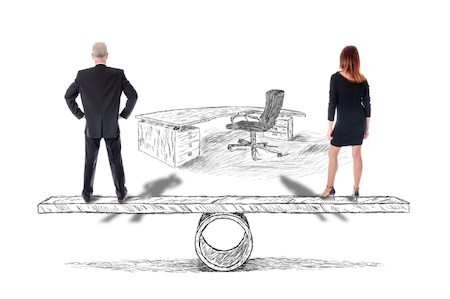
8 in 10 Americans say female leaders have to work harder than men to prove themselves
As National Women’s History Month comes to a close, The Harris Poll examines just how well Americans believe women are faring in the workforce today. While about 8 in 10 adults (81%) agree the U.S. has come a long way towards reaching gender equality – a significant increase over the 75% who said the same last year – there is clearly still work to be done. When it comes to women in the workforce, nearly 8 in 10 (79%) adults say that female leaders have to work harder than men to prove themselves.
These are some of the results of The Harris Poll® of 2,106 U.S. adults aged 18+ surveyed online between March 3 and 7, 2017. Complete results of the study can be found here.
The leadership landscape
While some improvement is evident, a majority of Americans still say that women’s contributions in leadership roles often go unrecognized (73% vs. 78% in 2016), and that women are less likely than men to be considered for roles leading large teams in a corporate setting (63% vs. 73% in 2016).
This begs the question of whether men are simply better at these roles. Yet, over half of adults say that women make better leaders than men (54%). If that’s the case, then what’s keeping women from these leadership roles? While not a majority viewpoint, 39% of adults agree that it is women who hold themselves back in the corporate world.
Nearly half of adults today say that women are just as likely as men to be considered for top executive roles (48% vs. 43% in 2016), yet only one third of Americans agree that women typically receive the same pay as men for doing exactly the same job (35% vs. 31% in 2016).
Working moms: still a struggle?
While women in America today are both touted and criticized for their ability (or struggle) to “have it all” in pursuing their career ambitions while raising a family at home – as men have done throughout history – the struggles working moms face are all but gone. Seven in ten adults (71%) agree that being a parent has more negative implications on a woman’s career than a man’s (75% in 2016).
While the parental balancing act can prove difficult for anyone, fewer Americans – though still a notable one third – say we will not see women advance in professional leadership roles until they can lessen their household roles (35%). Men, however, are certainly seen as increasingly doing their part at home as 88% of adults agree that, compared to previous generations, men today are willing to take on more responsibilities at home.
The future of change
While progress at times may seem slow, the American people have confidence in their ability to see long-term changes in workforce equality. More than 9 in 10 (92%) agree the next decade will see more female leaders. Further, 85% of adults say they are hopeful that gender equality will be achieved in their lifetime.
Looking forward to the next generation, two thirds feel that American women will have increased opportunities to lead organizations and committees and increased income potential (66% each). Over half also feel women will have more access to education (54%).
More critically than ever, the changes we wish to see in the world must start at home. As men and women alike continue to redefine their roles in the workforce, their roles as parents become even more crucial to shaping the future of gender equality. An overwhelming majority of adults (91%) agree it’s important that families teach their children that girls can do anything that boys can do (up from 89% in 2016).
“Americans are optimistic about the future of gender equality, while acknowledging that barriers remain – particularly in the corporate world – and that everyone has a role to play in advancing women’s status in society,” says Kathy Steinberg, managing editor of The Harris Poll.
Methodology
This Harris Poll was conducted online, in English, within the United Statesbetween March 3 and 7, 2017 among 2,106 adults aged 18+. Figures for age, sex, race/ethnicity, education, region and household income were weighted where necessary to bring them into line with their actual proportions in the population. Propensity score weighting was also used to adjust for respondents’ propensity to be online.
All sample surveys and polls, whether or not they use probability sampling, are subject to multiple sources of error which are most often not possible to quantify or estimate, including sampling error, coverage error, error associated with nonresponse, error associated with question wording and response options, and post-survey weighting and adjustments. Therefore, The Harris Poll avoids the words “margin of error” as they are misleading. All that can be calculated are different possible sampling errors with different probabilities for pure, unweighted, random samples with 100% response rates. These are only theoretical because no published polls come close to this ideal.
Respondents for this survey were selected from among those who have agreed to participate in Harris Poll surveys. The data have been weighted to reflect the composition of the adult population. Because the sample is based on those who agreed to participate in our panel, no estimates of theoretical sampling error can be calculated.
SOURCE The Harris Poll
Photo from: www.pintrest.com

Leave a Reply